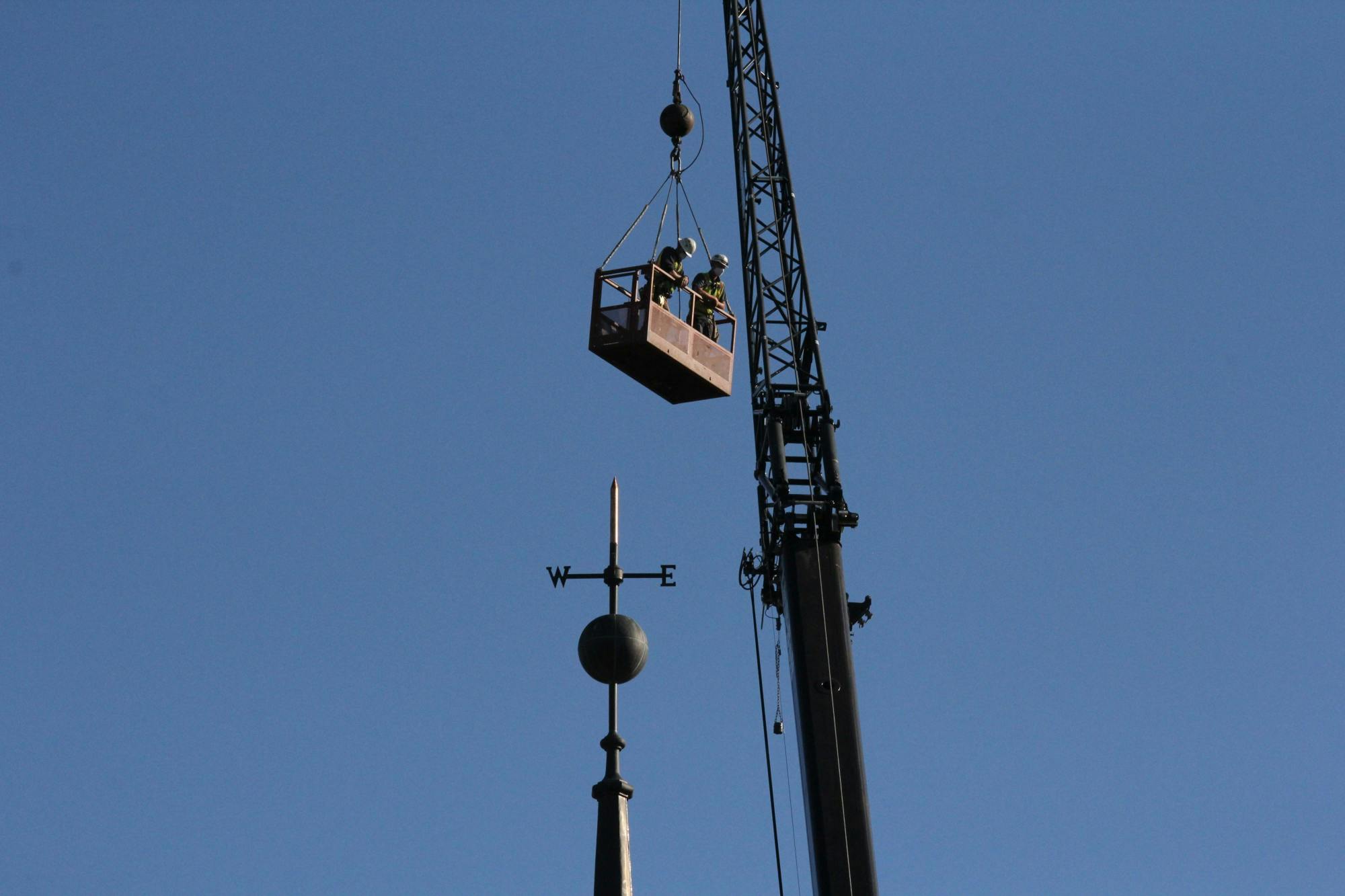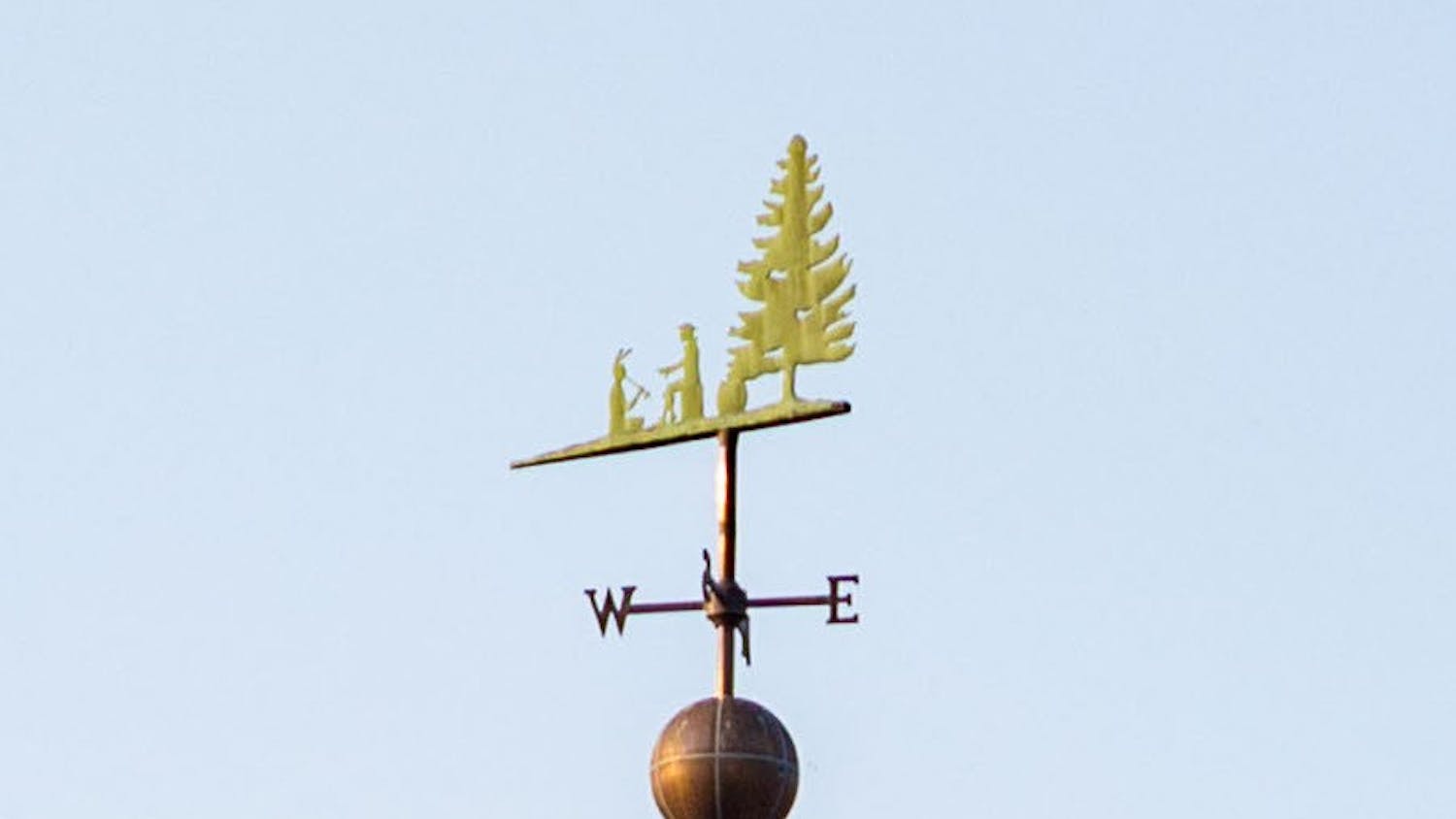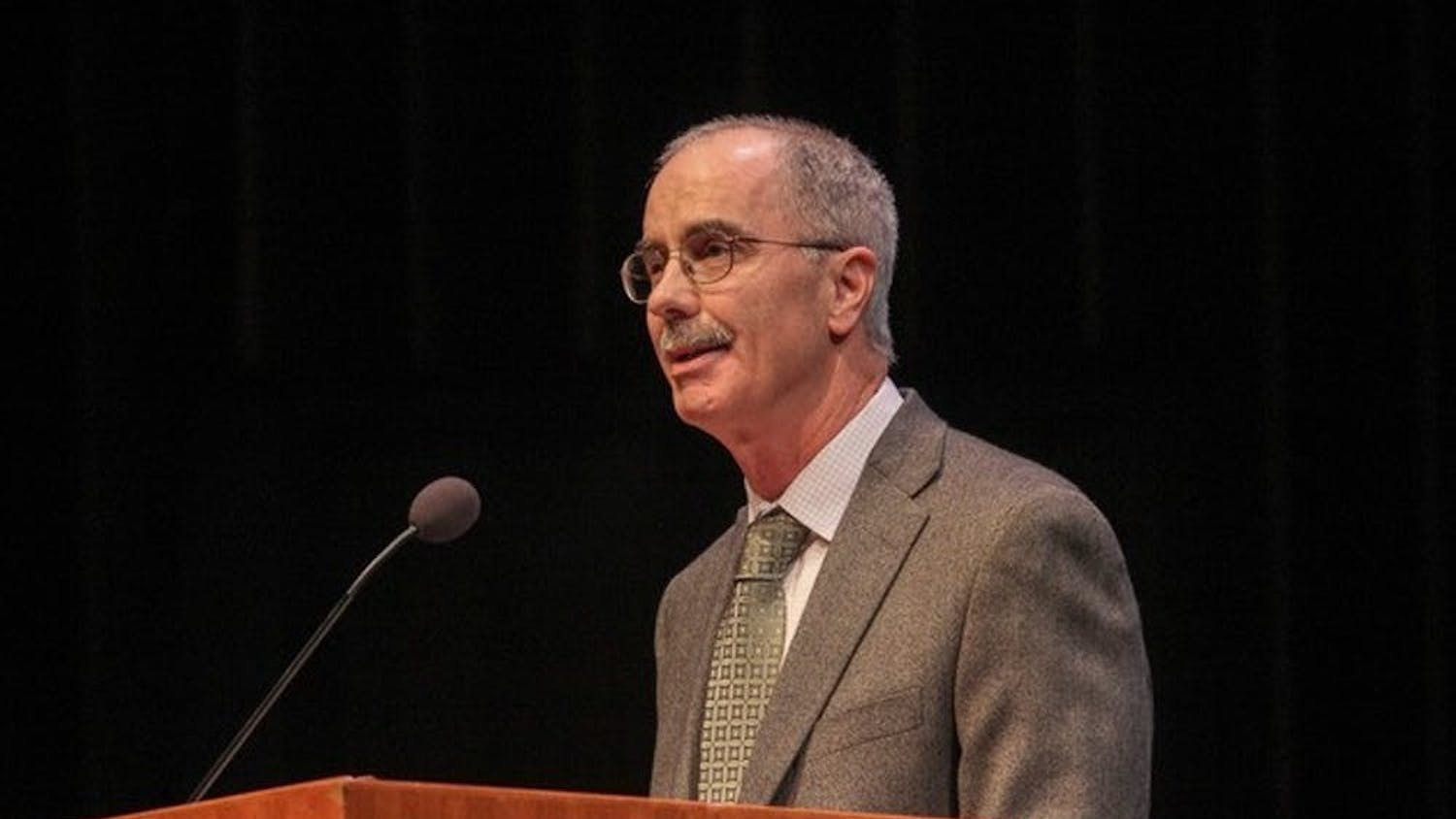The weather vane depicting an image of a Native American, which formerly sat atop Baker-Berry Library, was removed last Thursday in response to student and community concerns about its alleged offensive nature. According to College spokesperson Diana Lawerence, the weather vane has been placed in storage in the Hood Museum. The administration has assembled a committee tasked with finding a replacement and examining other iconography on campus.
The vane displays a Native American smoking a pipe and wearing feathers while sitting on the ground in front of Dartmouth's founder, Eleazar Wheelock. Standing behind Wheelock is an image of the lone pine, alongside a barrel that historical records say is likely a barrel of rum. College President Phil Hanlon said in a statement that the iconography of the weather vane “[does] not reflect Dartmouth’s values.”
Co-chair of Native Americans at Dartmouth Alayah Johnson-Jennings ’21 said that the removal of the vane from the highest point in Hanover represents Dartmouth’s continual efforts to improve its commitment to indigenous people.
“The weather vane portrayed a very stereotypical, condescending, patronizing depiction of the Native people,” Johnson-Jennings said. “And Dartmouth is constantly working towards its charter statement of its dedication to indigenous people — reaffirming that dedication it committed to in the ’70s. By taking it down, it's saying, ‘you’re actually people’ and it's more humanizing to its indigenous students.”
A petition to remove the weather vane was started by Hanover resident David Vincelette ’84 last month, and has received upwards of 850 signatures as of Thursday.
Vincelette said he is not Native himself, but was inspired to start the petition because of his life experiences and education. He noted that he was particularly impacted by the depiction of the rum barrel and the presence of the pipe in the hands of the Native American.
“It's just outrageous. If you think about it, I mean, you can’t ignore the part alcohol played in the genocide of the Native Americans … It's not a funny symbol. It's really a horrible, tragic symbol,” Vincelette said. “If you look at Dartmouth’s recent history with alcohol abuse and the troubles with sexual harassment, and all the other charges that it has played a part in, to have that up on the top of the library is just appalling,” he added.
Johnson-Jennings said that people have been speaking out against the weather vane for years. She recalled that on her first visit to Dartmouth around 2015, she “talked to students who were working on changing the weather vane.”
Native American Alumni Association of Dartmouth council representative Christopher Chavis ’12 said it was widely agreed upon when he was a student that the weather vane was a “racist and outdated depiction of Native people” that portrayed harmful stereotypes and tropes.
“When I was a student, NAD had a reverse weathervane where it was the Native person teaching Wheelock, as a way to kind of subvert that message,” Chavis said. “But, I think there's long been a recognition that it's inappropriate imagery.”
Johnson-Jennings said she believes that the decision was likely made due to “everything that’s happening right now concerning racial justice coming to the spotlight.”
The decision, however, has not been without its detractors among alumni and current students. The Dartmouth College Republicans released a statement that said Hanlon’s reasoning for removing the weather vane was “devoid of an appreciation of his own College’s history” and described the removal as “a blatant attempt at pandering to a handful of community members claiming unwarranted offense.”
The group’s statement went on to say that the “weathervane that sits atop Baker Tower is a celebration of everything that makes Dartmouth uniquely great and the staunchest reminder of Dartmouth’s historic commitment to educating Native Americans.”
Chavis said that he thinks the College’s response is in line with the values of the institution: reexamining history and asking critical questions.
“I think that Dartmouth is a place that teaches you to question the past and question history and question why we do certain things,” Chavis said. “So I think this is an example of Dartmouth doing what it tells the students to do — question. Question tradition, question history and reflect on why this is something we're celebrating.”
He said this is something communities “all across the South” are doing with regard to Confederate monuments.
“You're asking yourself, why did we celebrate this to begin with,” he said, “and what would be a more appropriate way to discuss these at these events and discuss these depictions?”
Although Johnson-Jennings is unsure of what should replace the weather vane, she hopes the College will choose to work with Native people in finding a solution.
“They should work on recommitting to the charter and ask indigenous artists to make the replacement, so it’s reclaiming that space and decolonizing it,” Johnson-Jennings said.
Chavis said that he could see the replacement for the weathervane featuring iconic Dartmouth imagery that celebrates the institution’s past.
“We have all these iconic images that you could fashion to an art piece and put on a weather vane,” Chavis said, listing the lone pine, Dartmouth Hall and a scene from 1769, the date of Dartmouth’s founding. “There's a lot of imagery from Dartmouth's past and in Dartmouth's history that you can call upon that doesn't dehumanize other people.”
Chavis said he supports the decision to keep the weather vane in storage, with the understanding that if it is ever put on public display, it would be with a “heavy disclaimer” and reflection on the history and actions of the time period that it was erected.
“As a relic of College history, I think that it is appropriate for it to be in storage, because it does have some teaching use for future people who are studying the College,” Chavis said.




